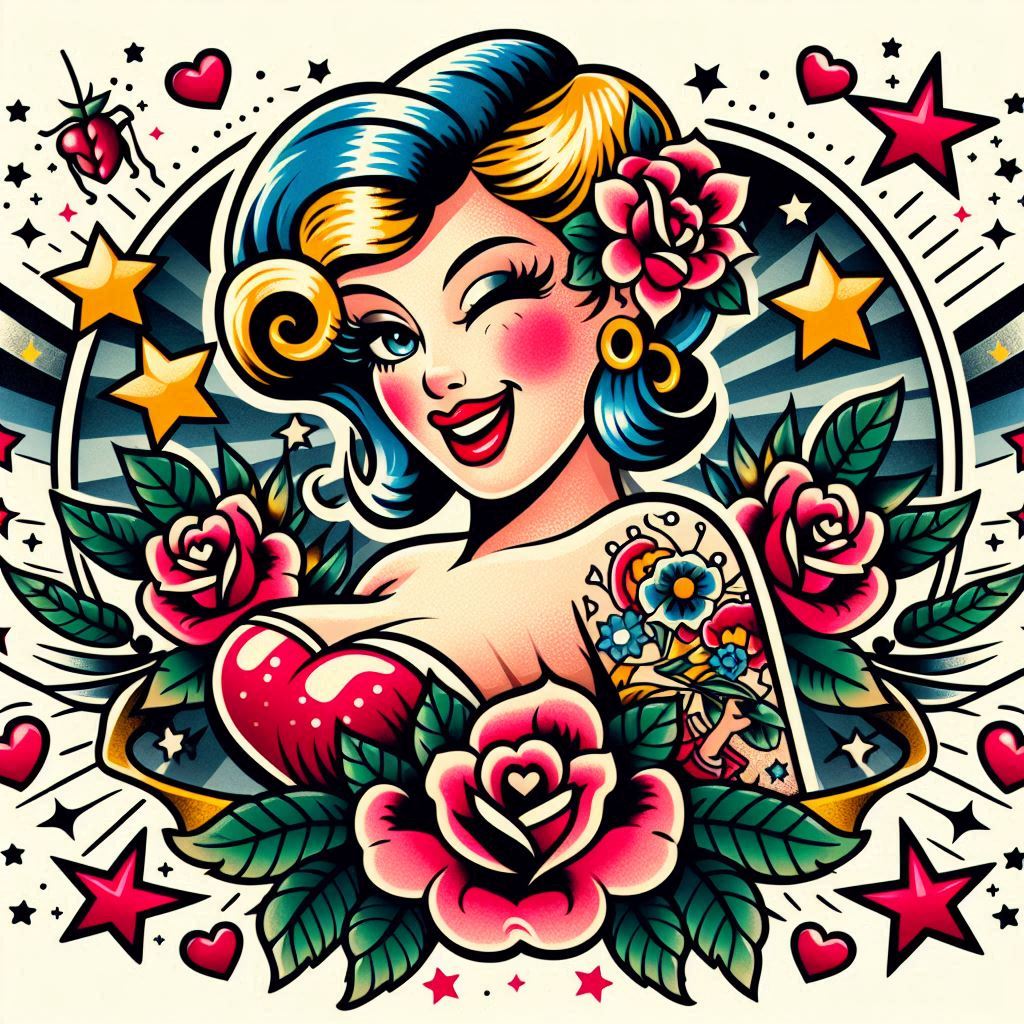Tattoos have long held a significant place in human culture, serving as a medium for self-expression and identity markers. Moreover, the mid to late 20th century witnessed a remarkable evolution in both the artistry and societal views surrounding tattoos. This era marked a transition from a hidden subculture to broader acceptance, heavily influenced by cultural movements and societal changes.

Historical Context
The 1950s: A Rebellious Subculture
During the 1950s, tattoos were primarily associated with rebellion and counterculture. In particular, they gained popularity among groups such as sailors, bikers, and gang members, who often used tattoos to signify loyalty and identity. Furthermore, the post-war period saw an increase in tattoo parlors, especially in port cities, where sailors would get tattoos to commemorate their sea experiences. However, mainstream society often viewed tattoos with skepticism, linking them to deviance and criminal behavior.
The 1960s and 1970s: Emblems of Freedom and Expression
In addition, the cultural revolutions of the 1960s and 1970s led to tattoos being embraced by the hippie movement and various countercultural factions. Consequently, tattoos evolved into symbols of freedom, self-expression, and a challenge to traditional norms. Influenced by Eastern philosophies and art, many individuals chose designs featuring peace symbols, mandalas, and other motifs that echoed the era’s messages of peace and love.
Notably, the feminist movement also played a role in reshaping perceptions of tattoos. As a result, women began to adorn their bodies with tattoos as acts of empowerment and liberation, defying conventional gender roles and expectations.
Technological Advancements and Artistic Growth
Enhanced Equipment and Techniques
Moreover, the mid to late 20th century marked noteworthy advancements in tattooing technology and methods. The invention of electric tattoo machines enabled more precise and intricate designs. Additionally, inks became more varied and durable, providing artists with an expanded color palette. These enhancements made tattoos increasingly appealing to a wider audience, as the quality and artistry of tattoos improved significantly.
Tattoo Artists as Pioneers
Influential artists like Sailor Jerry, Ed Hardy, and Lyle Tuttle played crucial roles during this period. They elevated tattooing to a recognized art form, introducing innovative styles and techniques that inspired a new generation of tattooists. Notably, these artists traveled extensively, drawing inspiration from diverse cultures and incorporating those elements into their work. Their impact helped to reshape public perception, establishing tattooing as a legitimate and respected art form.
The Shift in Public Perception
As tattoos became more prevalent and diverse, public opinion began to shift. Celebrities and musicians, including Janis Joplin and The Rolling Stones, proudly showcased their tattoos, thereby helping to normalize the practice. By the late 20th century, tattoos were increasingly viewed as forms of personal expression rather than mere symbols of rebellion or deviance.
Conclusion
To summarize, the mid to late 20th century was a pivotal era for tattoos, characterized by technological advancements, cultural transformations, and evolving public perceptions. What started as a largely marginalized practice evolved into an accepted form of art and self-expression. As society continues to progress, tattoos remain a powerful means of storytelling and identity, reflecting the dynamic tapestry of human culture.


You must be logged in to post a comment.